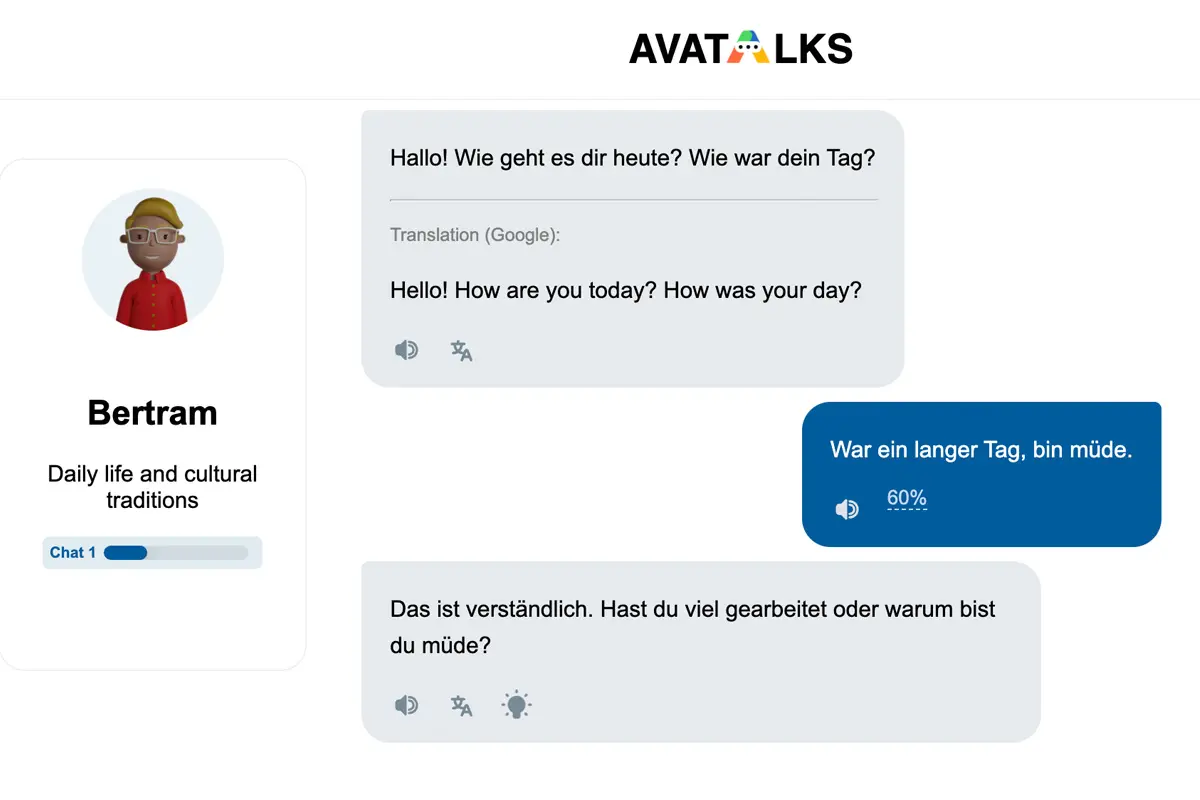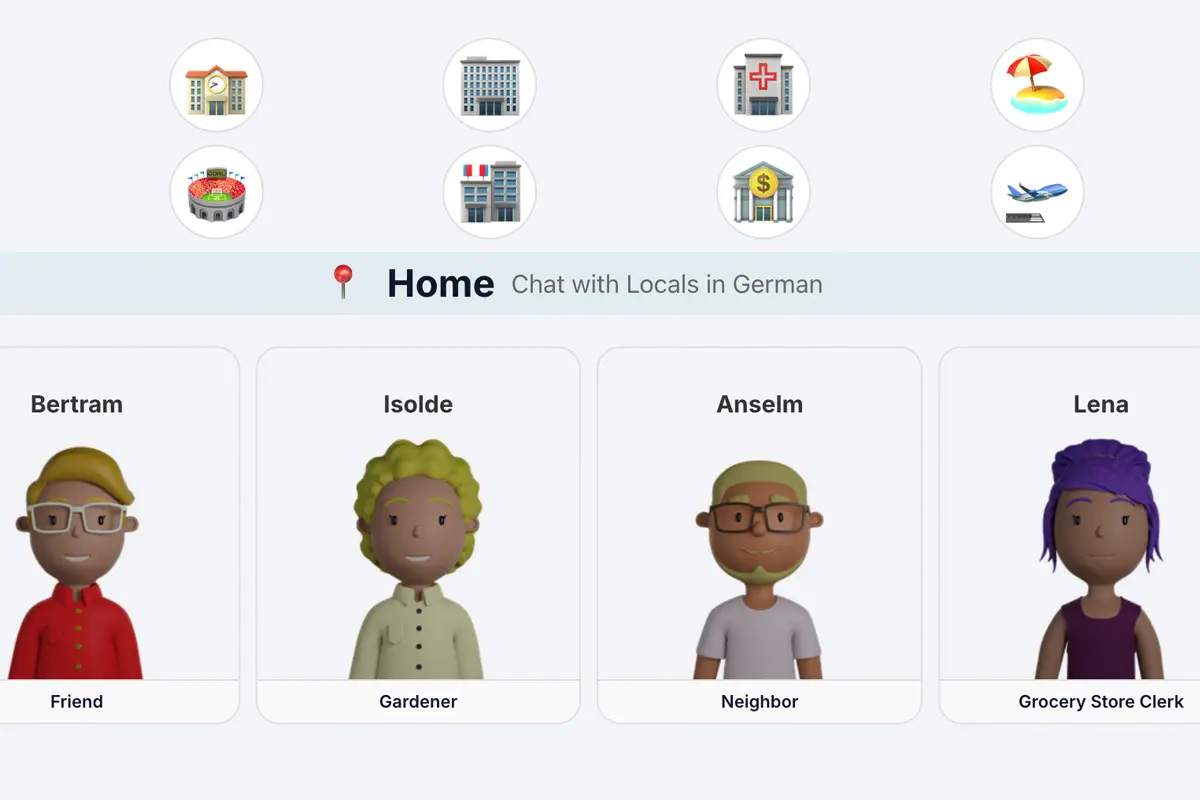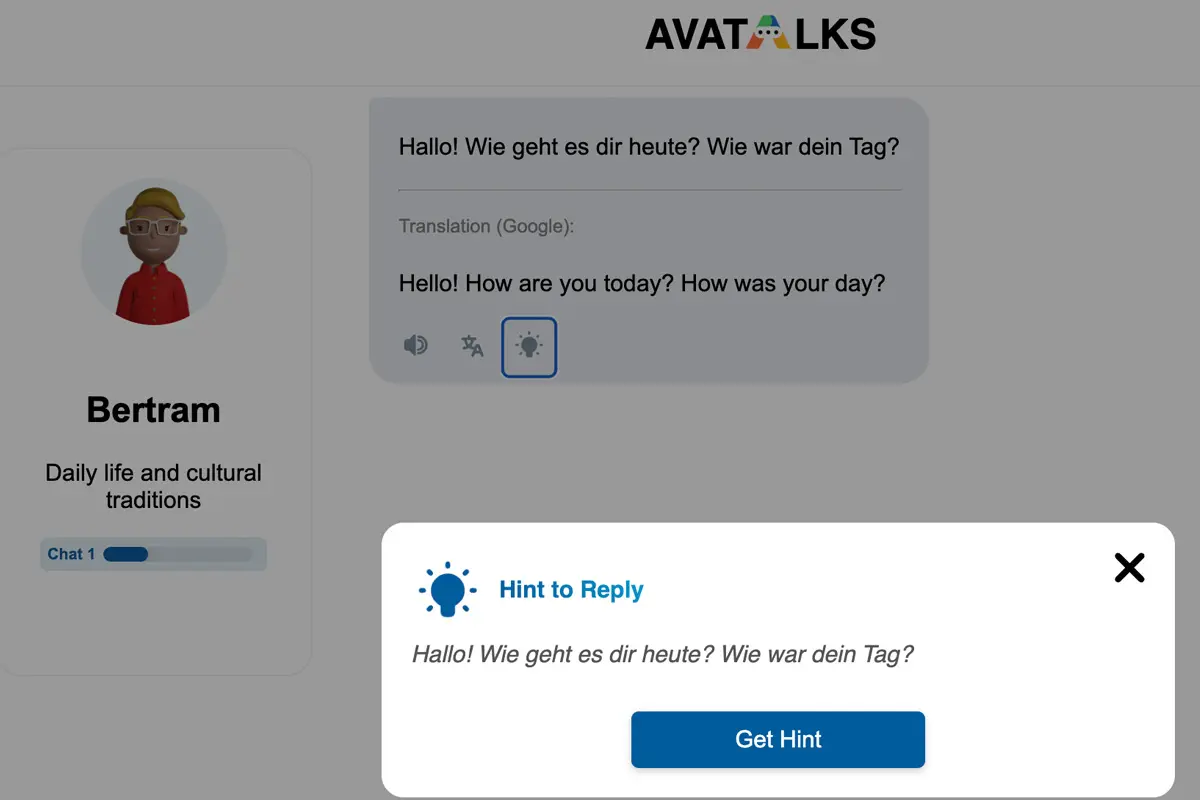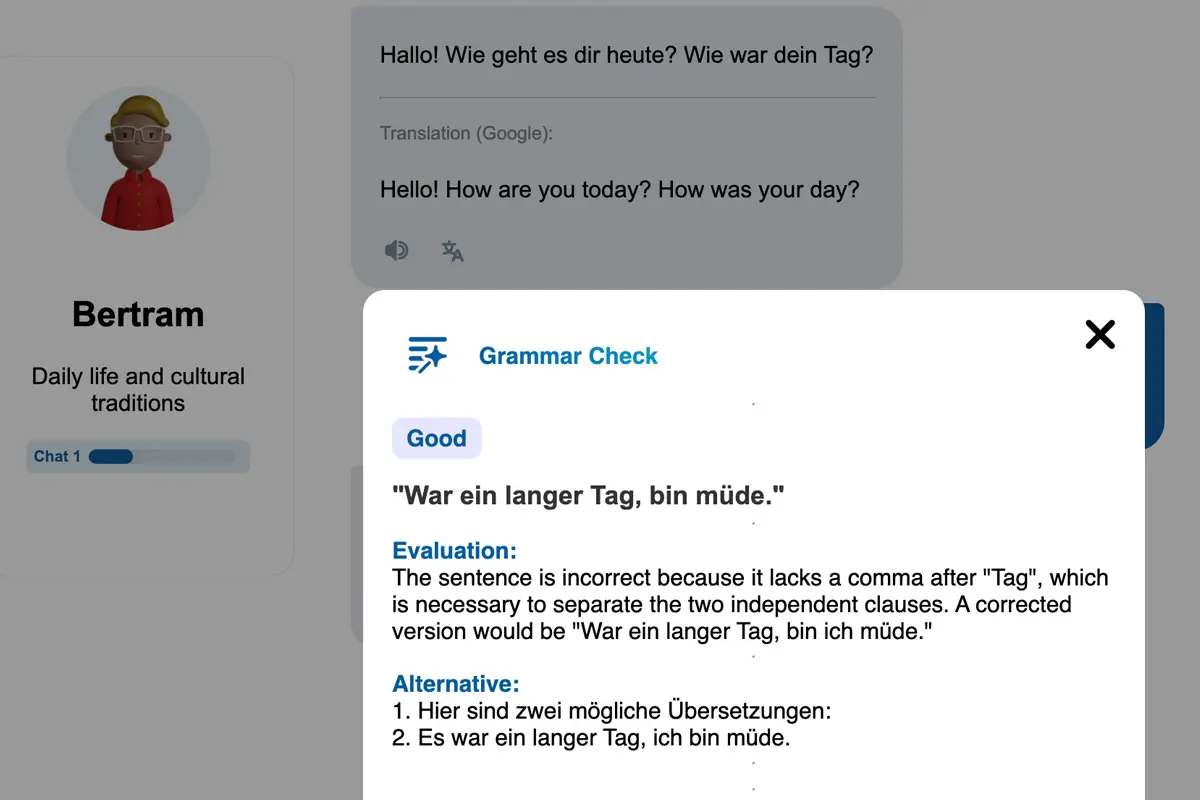
Want to level up your German speaking skills without it feeling like a chore? The best way to get better at speaking German is to practice regularly. However, this can feel scary or strange at first.
That’s where Avatalks comes in. We created a fun chat experience for German learners.
It helps users master basic sentence building and word order. You will learn about subject-verb-object (SVO) structure, modal verbs, and conjugated verbs. Plus, a friendly 3D AI tutor is available anytime to help.
In this guide, you’ll learn:
- Why traditional methods fall short for speaking fluency
- What makes practicing a sentence in German so difficult
- How Avatalks solves these problems with smart, structured interaction
- How to form sentences confidently and build speaking fluency fast
🧩 Why Is Speaking German So Hard to Practice?
Even if you’ve memorized basic German grammar rules or know useful phrases like “hast du,” speaking can still feel like a massive leap. That’s because reading or listening doesn’t automatically train you to respond in real-time—especially when nerves kick in.
Why is it so difficult?
- Fear of making mistakes in front of others
- Lack of structured, scenario-based practice sessions
- Struggles with tricky German word order
- Confusion around SVO sentence structure and subordinating clauses
This hesitation leads many learners to avoid conversations entirely. They delay speaking until they feel “fluent”—but fluency only comes from doing. If you don’t practice speaking, your progress stalls.
Improving your German speaking skills is different from reading or grammar drills. It needs you to use the language actively. You must form sentences and respond to others. Without this, you’ll hit a plateau.
That’s why it’s important to practice German out loud. Use interactive tools that mimic real-life situations to build confidence. Repetition and feedback are key for learning German. This is true whether you are speaking with a native speaker or an AI tutor.
🎮 The Fun Fix: Avatalks’ Chat Mode
Imagine logging into a platform. You can choose a realistic 3D avatar character. Then, you can chat naturally in German. It feels like role-playing a real-life scenario.
Avatalks’ Chat Mode turns grammar knowledge into speaking skill with real-world, immersive features:

- 👩🏫 3D character-based avatars that play unique roles—like classmates, friends, HR interviewers, bank tellers, or airport staff. Each interaction shows a real-world situation. This helps you build fluency in context. You will learn the correct German sentence structure, word order, and adverbial phrases.

- 💬 Real-time level-matched chat adapts to your ability and provides immediate feedback. You will get help and corrections based on your level. This applies whether you are learning verb parts, infinitive verbs, or conjugation patterns.

- 🧭 Hint Mode is a function designed to help when you’re unsure how to respond. Just turn on Hint Mode. You will get helpful suggestions to keep your sentences flowing. This is great for practicing grammar, like modal verbs, and building your confidence in writing.

-
📝 Live grammar feedback finds mistakes as you type or speak. It corrects verb placement, spots issues with conjunctions, and gives alternative sentence suggestions. You’ll gradually internalize correct German grammar through practice.
-
🎯 Scenario-based missions guide you through common situations—ordering food, asking for help, doing an interview. Each mission focuses on real goals, letting you master one basic sentence type at a time.
👉 Try it now at avatalks.com/chat
🧱 Structured Speaking Practice That Builds Real Fluency
Most apps drop you into open-ended chats. That’s overwhelming.
Avatalks provides structured practice built around German sentence structure, breaking down each sentence into:
- Subject
- Conjugated verb
- Object
- Optional: Adverbial phrase or prepositional phrases
You’ll quickly learn to form sentences with proper grammar—not just memorize phrases.
📈 Build Confidence by Repeating—Not Just Chatting Once
Confidence doesn’t come from chatting once—it comes from redoing and refining.
That’s why Avatalks encourages repeated missions. Each retry helps reinforce the correct parts of the verb, sentence flow, and natural usage of modal verbs or auxiliary verbs like “hast du”.
👂 Learn to Listen While You Speak
Every conversation has native voice replies. As you speak, you hear natural German pronunciation, tone, and rhythm.
This dual-mode practice helps you:
- Understand how word ordering impacts meaning
- Improve your own accent
- Recognize subordinating clauses and coordinating conjunctions in real use
📅 Add Avatalks to Your Routine (Without Burnout)
Start with under an hour a week:
| Day | Speaking Focus | Time |
|------------|------------------------------------|--------|
| Monday | Self-introduction + SVO structure | 10 min |
| Wednesday | Modal verbs & questions (hast du?) | 10 min |
| Friday | Description & infinite verbs | 10 min |
| Sunday | Review + form sentences again | 15 min |🧠 Speaking Is the Final Step in Learning
You can study German grammar for months and still freeze up when asked a question like “Hast du einen Hund?”.
That’s because grammar knowledge doesn’t automatically translate to speaking ability.
Avatalks bridges that gap by training you in:
- Fast sentence construction
- Smooth verb usage
- Real-time decision-making
- Flexible responses using coordinating conjunctions
🚀 Start Speaking with Confidence—Today
Don’t wait to “get fluent first.” You become fluent by practicing out loud—and Avatalks makes that process easier, smarter, and more fun.
👉 Start your first German conversation now
✅ Final Thoughts: Master German Sentence Structure Through Practice
Speaking isn’t memorizing—it’s building. With Avatalks, you’ll form strong foundations in:
- German word order
- SVO sentence structure
- Conjugated and infinite verbs
- Modal and auxiliary verb usage
- Common structures like “hast du…”, adverbial phrases, and coordinating conjunctions